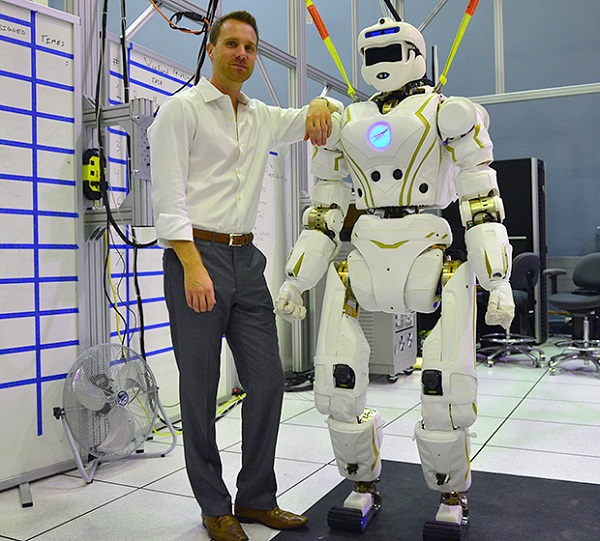Most of the teams who took part in last year’s DARPA Robotics Challenge (DRC) explained how their robots would look and work, except NASA’s Johnson Space Center (JSC), which provided only a a piece of concept art and kept everything else hush-hush.
NASA has been tinkering with the idea of Robonaut, a robot astronaut, for a few years now. Even the concept art they submitted for the DARPA Robotics Challenge was supposed to be a version of their humanoid robot. At some point in the recent past, Robonaut 2 (the current iteration of the robot) or R2 (D2?), if you prefer, and the robot for the DARPA challenge took different paths. The latter also received a different name, Valkyrie, while the former didn’t evolve past the concept art depicted below.

Valkyrie went through a lot of transformations (and even a sex change, if we are to look at this robot’s bust) between the concept pictured above and its current shape. As far as its design goes, it’s as if one of the Power Rangers had a baby with one of the Star Sheriffs from Saber Rider. That’s not all of it, though, as the Agency’s logo from the above image has been replace by something that resembles quite a lot Iron Man’s arc reactor.

JSC team leader Nicolaus Radford ran people through the details of R5, as Valkyrie is known as internally. The robot stands 6′ 2″ tall, weighs 125 kg and has 44 degrees of freedom.
<img src=" “>
“>
As good looking as it may be, Valkyrie was built for emergency situations, or disasters, if you’re a fan of brutal words. Its bulky arms are interchangeable and its feet were made for walking (duh!) on all sorts of terrain, be it even or uneven.
<img src=" “>
“>
Some of the tests Valkyrie will have to pass in order to win DRC include covering a certain distance on uneven terrain, climbing a ladder, using tools and driving. Most of these, while really challenging, shouldn’t be a problem for NASA’s robot.
<img src=" “>
“>
There is one aspect that might really put Valkyrie’s capabilities to the test. This humanoid robot is powered by a battery. I’m sure that when starting the test drive, this battery will be fully charged. However, I wouldn’t want to know what happens if Valkyrie’s battery runs out while the robot is behind the wheel.
<img src=" “>
“>
All in all, Valkyrie is a great example of how robots should look and work, and I’m really curious how JSC’s robot will do against its other DRC competitors.
If you liked this post, please check the NASA spacesuit inspired by Buzz Lightyear and the NASA FINDER radar that spots heartbeats through rubble.










